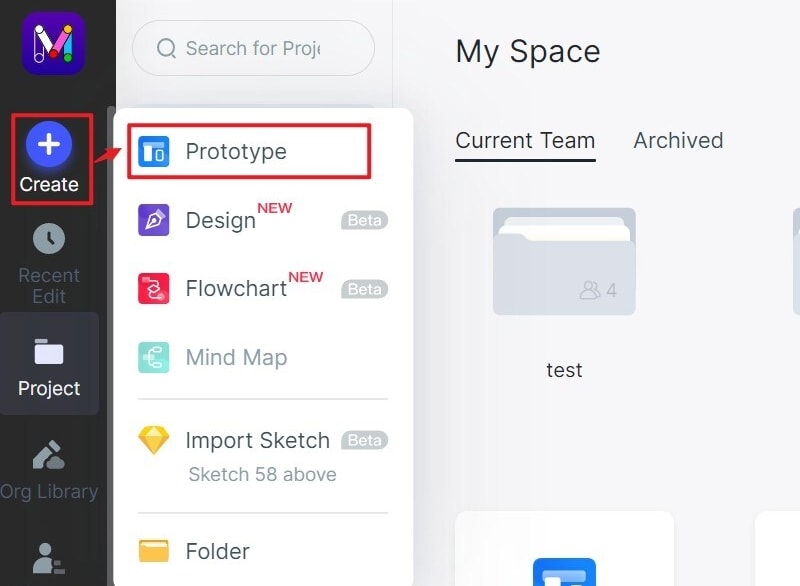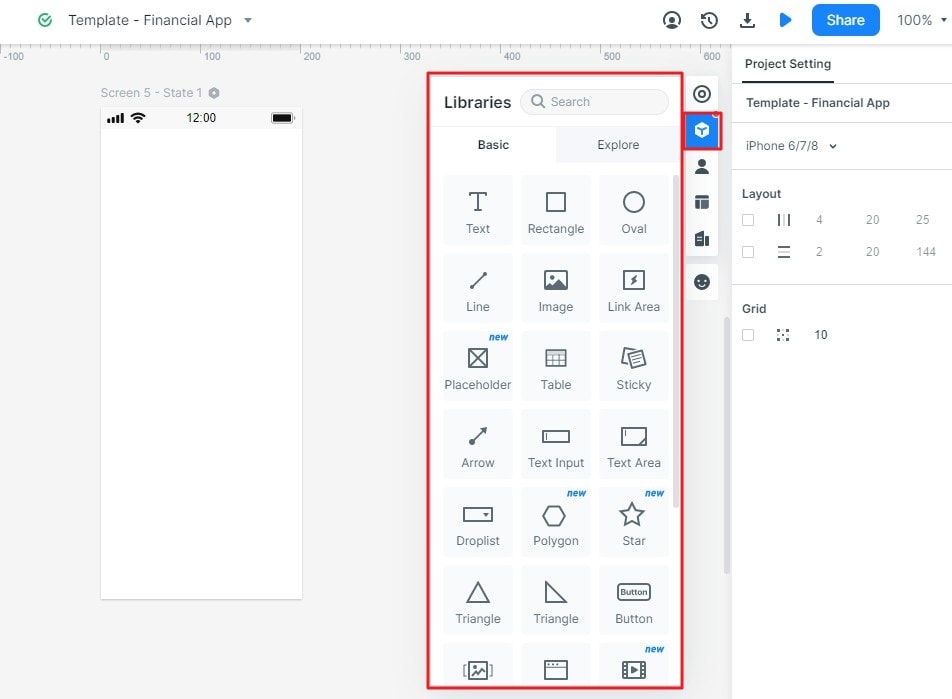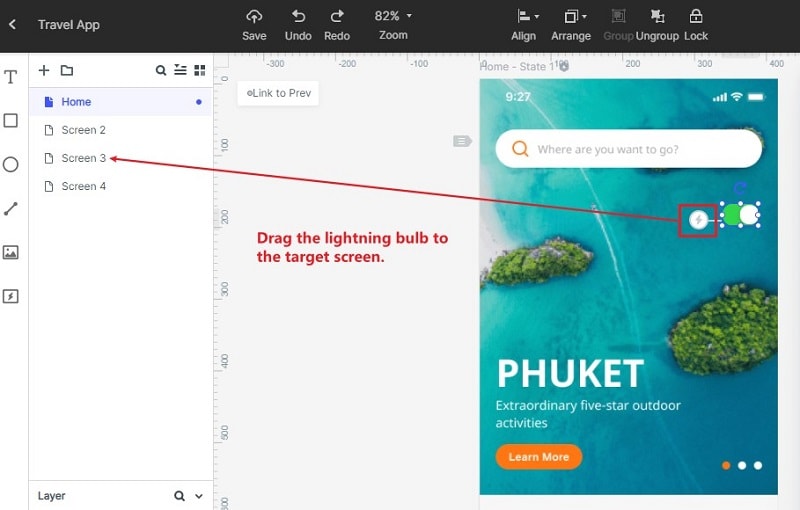What is UX Lab and How to Build a Successful UX Lab
Over the years, UX lab has been a game-changer as far as product usability testing is concerned. Although it has some unavoidable flaws, the UX research lab has been quite impressive. While user research lab isn't something new in the UX design matrix, there are plenty of people who don't know what it means and how to build a successful UX lab. Fortunately, this article gives you a crystal clear definition of UX lab, including how to build a successful UX lab with ease.
- Part 1. UX Lab Meaning and Introduction
- Part 2. Three Successful Examples of UX Lab
- Part 3. How to Build a Successful UX Lab
- Part 4. The Best UX Design Tool
What is UX LAB
UX lab is a usability testing technique where test participants are physically put in an enclosed environment and given the test by a test facilitator. The test participants sit in front of a computer or the interface they are supposed to interact with easily. Cameras or other recording devices are placed in this room/lab, and the recordings are channelled to a remote room where several observers watch how the user interacts with the product. Observers pay attention to user's navigation and reaction and write them down for evaluation. Users must be provided with an environment that allows them to react naturally to the product. This means the cameras and other recording systems should not be placed not to trigger unnatural reactions. Although the UX lab has a limited geographical pool, the sample quality and qualitative insights are excellent because of its control.
3 Examples of UX Lab
To realize effective usability testing with a UX lab, you need to select an excellent UX lab. This means the environment should have the necessary features and factors for effective usability testing. There are multiple places to conduct UX lab tests. You can do it in a hotel, conference room, company's cafeteria, board rooms, and office among others. Over the years, UX labs have evolved. Some of the state-of-art UX labs have been developed across the world. The following are some of the popular UX labs.
1. The Digital of Things
The Digital of Things, as the name suggests, is a modern state-of-the-art user testing lab. This high-tech UX lab is located in Dubai. Perhaps it coincides with the fact that Dubai is the home of a plethora of magnificent things. The Digital of Things experts created this lab following the ballooning need for good UX in the region. This lab marks the first UAE's high-tech usability testing lab that includes the world's leading analytic features like the FaceReader for facial expression analysis. In conjunction with Noldus, the Digital of Things set up and equipped the lab with advanced user experience testing software, a comfortable living room for natural comfort, a one-way mirror, and several cameras and microphones. Generally, these amazing features give qualitative data and insights as well as useful recommendations to clients.
2. Social Media Lab- Mons, Belgium
In Mons, Belgium, the Social Media Lab was set to tap into the current huge social media space. It aims to bring together people from diverse fields like education, journalism, marketing, and communication to understand the digital world better. They carry out tests and use integration and behaviour analysis tools such as The Observer XT to make sense of data and data visualizations. Also, software likeMediaRecorder is used for synchronous AV recording. At the University of Louvan, Noldus' software integrates different data streams and set up experiments.
3. Canadian-Based UX Lab
Noldus teamed up with Team3Lab at HEC Montreal to create a good UX lab. Team3Lab designed a revolutionary cloud-based UX research tool called CubeHX. This software combines human behavioral data (cognitive and emotional data) and gives unique insights into what generates these behavioral data. From data collection to insightful findings, this Montreal-based lab is a great example of a UX lab.
How to Build a Successful UX Lab
Building a successful UX lab is not just a walk in the park. It involves a lot, including:
1. Plan
Before proceeding, you need to know everything that you will require in the test. Hire test facilitators, find the correct audience, avenue, and necessary equipment.
2. Set up the UX Lab
After settling on a specific venue/room as your UX lab, you need to set it up accordingly. Setting it up involves bringing all the hardware, software, and human resources used in the test. Depending on the environment's choice and the nature of the test, the size of things you are supposed to set up could vary. The most common devices include desktops for testers, laptops for observers and facilitators, cameras and recording devices to capture user reactions, and software like screen recorder to capture user-navigations.
3. Integrate your Systems
Once you have set up the required items and devices, you need to ensure that they work in harmony and necessary information to observers. Since you are setting up different systems (hardware and software), they might not be compatible. You can leverage integration software and then mirror all your inputs to the main observation dashboard. Again you can mirror the screen to other devices if you want.
The Best Tool for UX Design
Wondershare Mockitt is the best tool to create UX designs. This program is equipped with plenty of features that make UX design seamless and pacey. There are plenty of UX design templates, icons, and built-in widgets that help users create stunning UX designs in minutes. Just drag these components, drop them to the edit, and start editing as per your need. If you are tired of static designs, you can incorporate animations to make your designs more interactive and appealing. Design together with your team members with the help of collaboration features. You can co-edit, comment, and receive feedback in real-time.

- With the collaboration feature, users can co-edit the UX design on the same page, comment, and share feedback in real-time.
- It has plenty of design resources like templates, icons, and widgets for users to choose from and build a magnificent UX design.
- Users can turn static UX designs into interactive designs through animation features.
- Users can share their UX designs with friends and colleagues.
- It allows users to hand over their UX designs to developers through the handoff feature.
Step 1. Create a Project
Login to Mockitt and navigate to "Personal Space"> "Create"> "Project." From the subsequent "Create New Project" dialogue box, enter the project name and select device. Now click "Create" to enter the editing area.

Step 2. Add UX Design Widgets
Head to the Widget section and select the desired UX widgets and icons. These include buttons, test area, link area, text, and plenty of shapes. Simply drag them and drop them on the canvas/text area. Again you can click the "+ Add Screen" button at the top left to add more screens and fil them with desired UX widgets and icons.

Step 3. Create Interactions for UX Design
Click the target widget on the edit area and drag the arrow on its left to the destination screen. Repeat this for all the other widgets and screens that need to be linked.

To add more interactions, select the object, and navigate to "Event"> "Create Link." Select suitable Event, Transition, and Action for your UX design.
Step 4. Preview the UX Design
Click the "Preview" at the top right and interact with your UX design. In this stage, you can test the UX design. If you find there need to modify, you can make notes and comments. Finally, click the "Handoff" button at the top-center and copy the code under the CSS tab.


